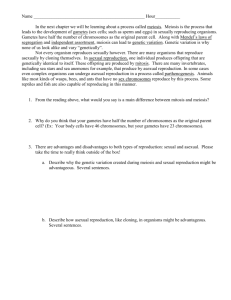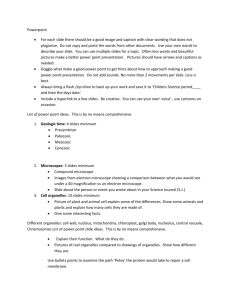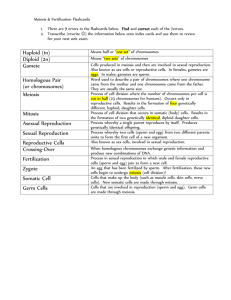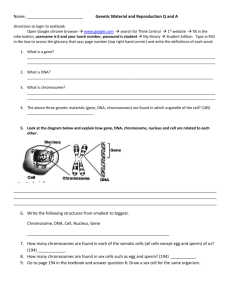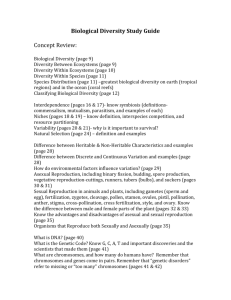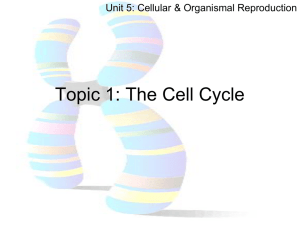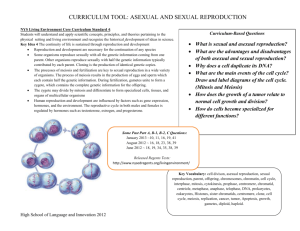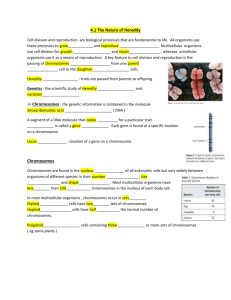4251.methods of reproduction
advertisement
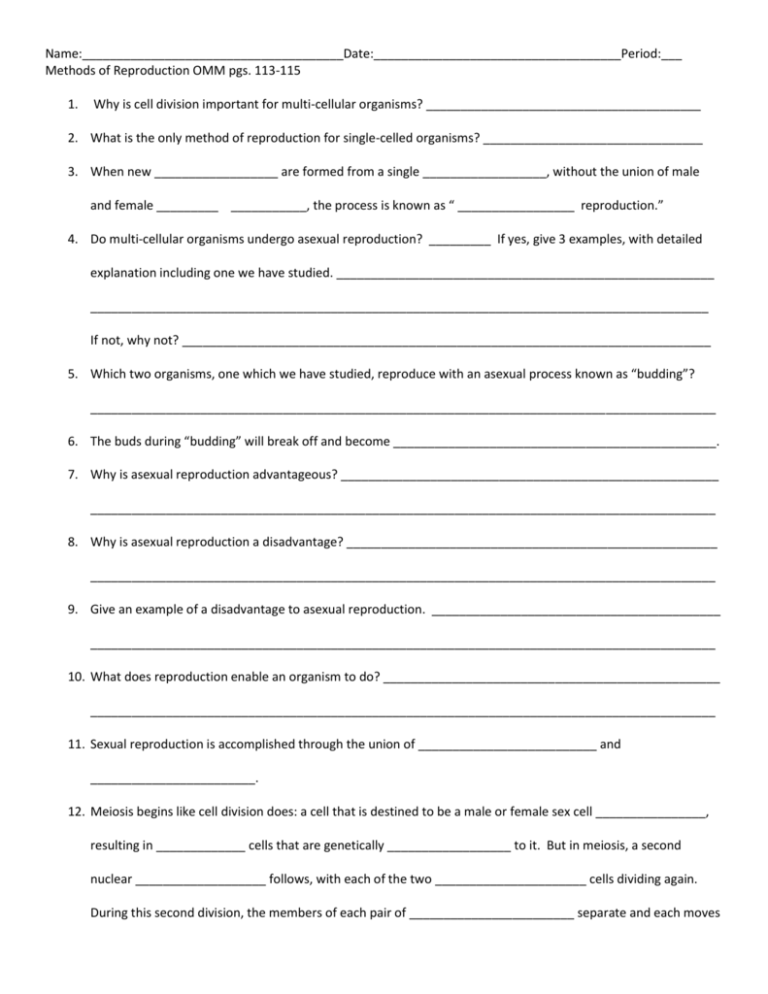
Name:______________________________________Date:____________________________________Period:___ Methods of Reproduction OMM pgs. 113-115 1. Why is cell division important for multi-cellular organisms? ________________________________________ 2. What is the only method of reproduction for single-celled organisms? ________________________________ 3. When new __________________ are formed from a single __________________, without the union of male and female _________ ___________, the process is known as “ _________________ reproduction.” 4. Do multi-cellular organisms undergo asexual reproduction? _________ If yes, give 3 examples, with detailed explanation including one we have studied. _______________________________________________________ __________________________________________________________________________________________ If not, why not? _____________________________________________________________________________ 5. Which two organisms, one which we have studied, reproduce with an asexual process known as “budding”? ___________________________________________________________________________________________ 6. The buds during “budding” will break off and become _______________________________________________. 7. Why is asexual reproduction advantageous? _______________________________________________________ ___________________________________________________________________________________________ 8. Why is asexual reproduction a disadvantage? ______________________________________________________ ___________________________________________________________________________________________ 9. Give an example of a disadvantage to asexual reproduction. __________________________________________ ___________________________________________________________________________________________ 10. What does reproduction enable an organism to do? _________________________________________________ ___________________________________________________________________________________________ 11. Sexual reproduction is accomplished through the union of __________________________ and ________________________. 12. Meiosis begins like cell division does: a cell that is destined to be a male or female sex cell ________________, resulting in _____________ cells that are genetically __________________ to it. But in meiosis, a second nuclear ___________________ follows, with each of the two ______________________ cells dividing again. During this second division, the members of each pair of ________________________ separate and each moves Name:______________________________________Date:____________________________________Period:___ Methods of Reproduction OMM pgs. 113-115 into one of the _______________ cells. This means that the new sex cells—the male (sperm) or female (egg) cells—contain only _______________________ the number of chromosomes as do regular ____________ cells. They also are no longer genetically ____________________. The same basic process of meiosis occurs in all __________________ and in _________________ plants. For example, Wisconsin Fast Plant cells normally have ____________ pairs of chromosomes (a total of _____________ chromosomes). When pollen grains or ovules are formed, each has only 10 _______________ chromosomes. When _______________________ takes place, the _______________ grain contributes 10 chromosomes and the _________________ contributes 10 chromosomes. The resulting _____________________ has the normal 10 pairs of chromosomes. If the number of chromosomes in the sex cells were not halved, the organism would __________________ their number of chromosomes every _______________________. 13. Describe Meiosis (the above description) in your own words. __________________________________________ ___________________________________________________________________________________________ ___________________________________________________________________________________________ ___________________________________________________________________________________________ ___________________________________________________________________________________________ ___________________________________________________________________________________________ ___________________________________________________________________________________________ ___________________________________________________________________________________________ ___________________________________________________________________________________________ 14. Draw and label the process of meiosis
